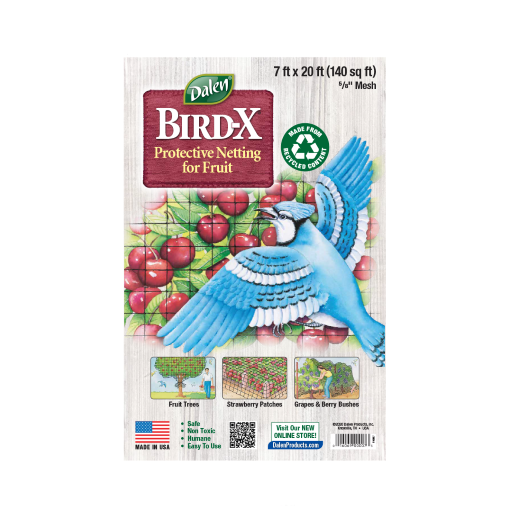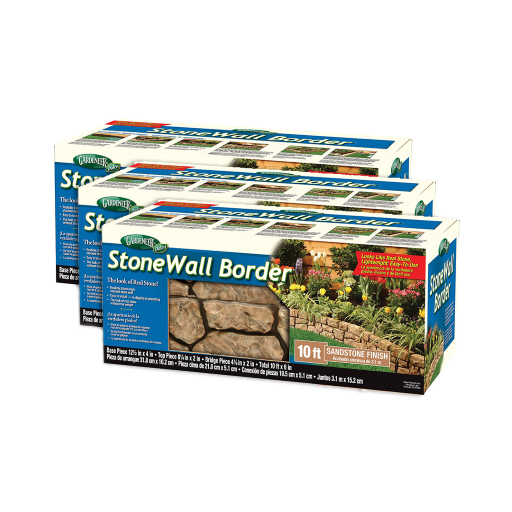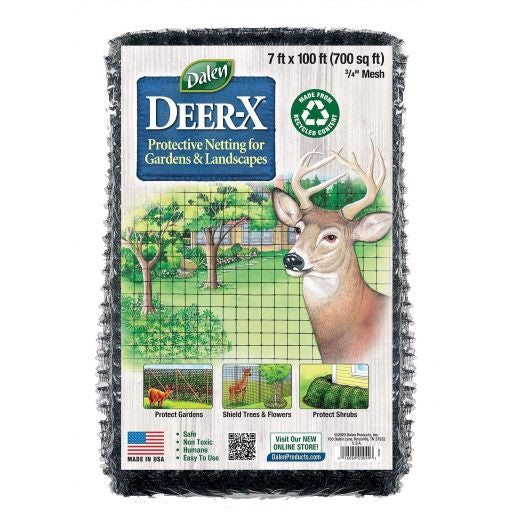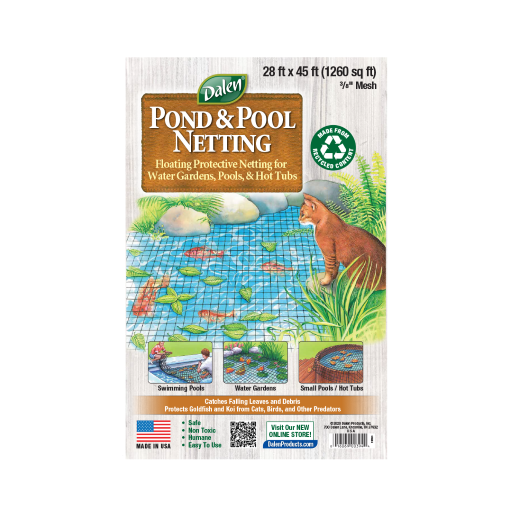
In modern-day America, preserving biodiversity is more crucial than ever. Alternative lawns offer a promising solution. Embracing alternative lawns can be a step toward cultivating lawn biodiversity and fostering a harmonious coexistence with nature. Better gardens can help grow a better world.
This blog will delve into alternative biodiverse lawns, shedding light on their role in nurturing biodiversity and creating a thriving, eco-friendly landscape. Read on to discover how to promote biodiversity and choose the best alternative for your garden.
Biodiversity means having various plants and animals in a given area. At home, biodiversity creates a diverse ecosystem in your yard. A biodiverse lawn helps keep unwanted pests out of your yard and creates resiliency and adaptability to varying environments.
Alternative lawns offer a range of fundamental advantages that make them an appealing choice for environmentally-conscious gardeners:
Environmental sustainability: Embrace an eco-friendly option that reduces your carbon footprint by minimizing water usage, eliminating the need for harmful chemicals, and decreasing greenhouse gas emissions associated with lawn maintenance.
Water conservation: Save precious water resources with alternative lawns that demand significantly less irrigation than traditional grass, which is particularly crucial in regions facing water scarcity or drought conditions.
Low maintenance: Low-maintenance lawns are incredibly convenient because they require less mowing, fertilization, and overall upkeep. This type of biodiverse lawn is efficient for landscaping as it saves time, effort, and resources.
Biodiversity promotion: Encourage native biodiversity lawns within your outdoor space by nurturing various plant species in alternative yards. Having diverse plants in your yard or garden brings different pollinators, insects, and birds, which creates a more even and resilient ecosystem.
Resilience and adaptability: Opt for more robust lawns adaptable to different soil types, climates, and foot traffic. Alternative lawns showcase enhanced resilience, remaining lush and attractive in challenging conditions.
Community care: Demonstrate your concern for the community by choosing alternative lawns. By opting for sustainable landscaping, you set an example for your neighbors, encouraging them to consider eco-friendly options and collectively contribute to a greener and healthier neighborhood.

Choosing the right type of lawn for your garden begins with understanding your local climate and geography. Each region has unique environmental characteristics, which significantly influence the success and sustainability of your lawn. Whether in a dry, arid area or a humid, temperate zone, tailoring your lawn choice to fit your specific location is paramount.
You can use online resources such as the USDA hardiness zone map to determine your local climate and plant suitability. This map categorizes regions based on their average annual minimum winter temperature, providing valuable insights into what plants thrive in your area. Additionally, researching the flora native or well-adapted to your city can guide you in choosing the most appropriate lawn alternatives.
In arid regions, water conservation is vital. Opting for drought-resistant alternatives like succulents or certain native grasses can help you maintain a lush lawn without putting excessive strain on limited water resources. On the other hand, in more temperate areas, a broader range of alternatives, such as clover or traditional grass varieties, might be suitable.
Understanding your local environment and choosing a lawn that aligns with it ensures your garden remains vibrant and resilient. Tailoring your lawn choice to your location can optimize its sustainability and vitality, offering you a flourishing lawn that harmonizes with your surroundings.
Instead of creating a monoculture lawn with a single grass type, you can create a biodiverse lawn with these alternative ground cover options.

Clover: A Versatile and Eco-Friendly Lawn Substitute
Clover lawns are an eco-friendly alternative to traditional grass lawns. They require less water and can thrive in different soil types and pH levels. Clover also enriches the soil by fixing nitrogen, reducing the need for synthetic fertilizers.
One of the significant advantages of clover lawns is their resistance to drought and their ability to remain green during dry periods. Their resilience to high foot traffic and ability to choke out weeds further add to the appeal. Additionally, clover attracts pollinators like bees due to its abundant flowers, which enhances the biodiversity in your garden.
Whether you choose a pure clover lawn or a clover-grass blend, integrating clover into your landscaping supports sustainability and presents a charming and practical lawn alternative.
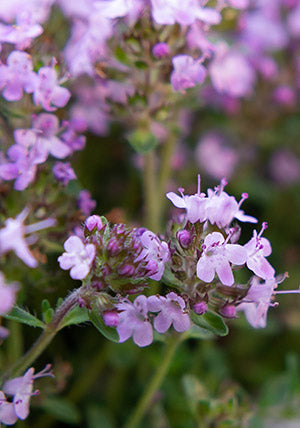
Creeping Thyme: A Low-Maintenance Alternative Lawn Option
Creeping thyme, a fragrant and visually appealing ground cover, has emerged as an excellent low-maintenance alternative to traditional lawns. Its low growth habit and dense coverage make it a desirable choice for those seeking a lush, carpet-like appearance with minimal upkeep.
This herbaceous perennial is known for its aromatic foliage and tiny, colorful flowers that attract pollinators. Creeping thyme is most suitable for areas with light foot traffic, not where people constantly walk. The plant is remarkably resilient, adapts to various soil conditions, thrives in well-drained soils, and tolerates poor, rocky substrates.
One of the standout features of creeping thyme is its ability to require very little water once established, making it an ideal choice for regions with water restrictions. Creeping thyme rarely needs chemical treatments since it is pest- and disease-resistant. Incorporating creeping thyme into your landscape offers an aesthetically pleasing alternative and contributes to a more sustainable approach to lawn care.

Moss: A Unique and Sustainable Lawn Choice
Moss, often overlooked and underappreciated, has gained traction as a distinctive and sustainable alternative to traditional grass lawns. Its lush, carpet-like appearance, ability to thrive in shade, and minimal maintenance needs make it an excellent eco-friendly choice for landscaping.
Mosses are non-flowering plants that reproduce through spores, forming dense mats of greenery. Unlike grass, moss doesn't require mowing, saving you time and reducing the environmental impact associated with lawn maintenance. Its unique aesthetic adds a touch of natural elegance to any outdoor space.
Moss has a unique ability to retain moisture that helps create a more humid microenvironment, which is particularly beneficial in arid regions. Additionally, it acts as a natural air purifier by trapping dust and pollutants and contributing to a cleaner and healthier environment.
Incorporating moss into your lawn can provide a soft, inviting surface ideal for barefoot walks and lounging. Its adaptability to various substrates and ability to thrive in shaded areas where grass struggles to grow make it a versatile option. Moss can redefine your lawn, offering a unique and sustainable choice that aligns with modern ecological considerations.
In addition to the alternative lawn options mentioned above, there are other ways to increase biodiversity in your yard.

Wildflowers in Your Lawn: Adding Color and Biodiversity
Wildflowers are a colorful and ecologically beneficial alternative to traditional grass lawns. They are adaptive, attract pollinators, and provide food and habitat for local wildlife. Wildflower lawns require minimal maintenance and less water than conventional lawns. They offer a vibrant and dynamic landscape that changes with the seasons.
Embracing wildflowers in your lawn is a step toward supporting local biodiversity and creating a lively, dynamic landscape.
Feed the Soil
While wild lawns with grass alternatives are generally low maintenance, you still need to feed your soil for optimal results. Add things like lawn clippings and mulched leaves, which naturally boost nutrients in the soil and promote better growth.
Avoid Chemical PesticidesAvoid chemical fertilizers, herbicides, and pesticides that can damage the ecosystem. While useful for some things, these products harm various plants and the good insects and birds needed for a thriving, biodiverse ecosystem. Aim to use organic products and approaches to protect your backyard biodiversity when required.

Add a Water Feature
The sound and sight of moving water can be highly relaxing for many people, which is why a water feature is an excellent choice for biodiverse lawns. In addition to being a beautiful focal point, water features benefit birds, bees, butterflies, and squirrels who need water while moving through your bio lawn.
Remember that you don’t need a prominent, costly water feature. You can find many smaller features with solar- or battery-powered pumps that fit your space and won’t break the bank.
Add Trees
Another way to cultivate lawn biodiversity is by planting trees. In addition to providing shade and potentially reducing energy bills, trees offer several other benefits, including:
- Promoting overall lawn and soil health
- Reducing carbon dioxide pollution
- Dropping leaves that can be turned into lawn compost
- Offering food and shelter for wildlife living in your biodiverse garden

Invite Wildlife and Pollinators
For flowers and plants to thrive and grow, you need pollinators like bees and butterflies in your biodiverse front yard or backyard. Make sure the plants you choose provide food and shelter for these beneficial insects.
In addition to pollinators, don’t be afraid to invite local wildlife into your biodiverse lawn. Birds are crucial for keeping harmful pests away, while squirrels help introduce new seeds into the yard. Consider adding birdhouses, bird feeders, and other similar items that create space for these helpful animals.
Remove Invasive Plants
Biodiverse lawns should have a variety of native and added plants. However, sometimes invasive plants sneak in, harming native plants and limiting beneficial plant species, insects, and animals. If you find any invasive plants in your garden — or accidentally plant some — remove them quickly so your biodiverse lawn can continue to thrive.

Create and Use Compost
Sometimes, the best way to create a biodiverse yard is to take a “less is more” approach. Using compost made from organic materials like leaves, you can naturally feed your soil, fertilize your lawn, and create living spaces for helpful bugs and animals. However, composting can lead to unwanted pests if left unchecked, so consider this beforehand.
Do you know why grass is important to the ecosystem? By adding native grasses to your biodiverse lawn, you can promote sustainable and ecologically balanced landscapes. Native grasses are inherently adapted to the specific conditions of their region, making them hardy, water-efficient, and resilient choices for your lawn.
Begin by identifying the native grasses where you live. A simple Google search with keywords like "native grasses in [your region]" can provide a wealth of information. For instance, in the US, the East and West regions have distinct native grasses that thrive in their respective climates.
US East
- Bouteloua curtipendula (Sideoats Grama): A warm-season grass known for its unique seed spikes and drought tolerance.
- Panicum virgatum (Switchgrass): A versatile grass with ornamental appeal and excellent erosion control properties.
- Schizachyrium scoparium (Little Bluestem): A drought-tolerant grass with attractive blue-green foliage and striking fall color.
US West
- Festuca arizonica (Arizona Fescue): A cool-season grass native to the mountainous regions, known for its fine texture and adaptability.
- Muhlenbergia rigens (Deergrass): A graceful grass with arching stems and a clumping habit, ideal for adding texture to your landscape.
- Nassella pulchra (Purple Needlegrass): The official state grass of California, recognized for its beauty, adaptability, and role in supporting local wildlife.
Incorporating these native grasses into your lawn ensures a low-maintenance landscape, promotes the preservation of local ecosystems, and supports regional biodiversity. Let's explore the beauty and ecological benefits of going native, encouraging the sustainability and vitality of your outdoor space.

Artificial turf grass is a convenient option if you're looking for a low-maintenance alternative to traditional grass. However, it's essential to debunk some misconceptions and shed light on why artificial turf grass is not a favorable choice from an ecological standpoint.
While artificial turf may require less maintenance in mowing and watering, it does not contribute positively to the ecosystem. Unlike living plants, it cannot perform essential ecological functions, such as absorbing carbon dioxide and releasing oxygen, providing habitat and food for wildlife, or improving soil health. This lack of ecosystem contribution makes artificial turf a less sustainable option.
Moreover, artificial turf is typically made from non-biodegradable materials like plastic, often containing harmful chemicals. These materials eventually become microplastics, harming wildlife and polluting the environment. The production and disposal of artificial turf also have negative environmental impacts, contributing to the larger issue of plastic waste and pollution.
In contrast, choosing natural alternatives like clover, moss, native grasses, or wildflowers supports biodiversity, soil health, and a more sustainable environment. These living alternatives actively participate in the ecosystem, enhancing your outdoor space's overall health and balance.
Before transforming your lawn, check your Homeowners Association (HOA) guidelines. HOAs enforce specific rules regarding landscaping to maintain a cohesive aesthetic and uphold property values. Disregarding these guidelines can lead to conflicts with neighbors. Engage with your HOA or landscaping committee, share your intentions, and seek their input or approval. Collaborating with the HOA ensures a seamless transition to a more sustainable landscape.

Congratulations on exploring the exciting realm of alternative lawns and their potential to transform your outdoor space into a sustainable, biodiverse haven. Now that you understand how to increase biodiversity, you can make choices for your lawn that can significantly impact the environment, from conserving water to promoting local wildlife.
Let Dalen help you find the right plants and products to embrace alternative, biodiverse lawns and craft a sustainable, thriving, and aesthetically pleasing landscape. Your biodiverse lawn reflects your commitment to a greener future and can inspire others to join the movement toward eco-friendly landscaping. Happy gardening!






